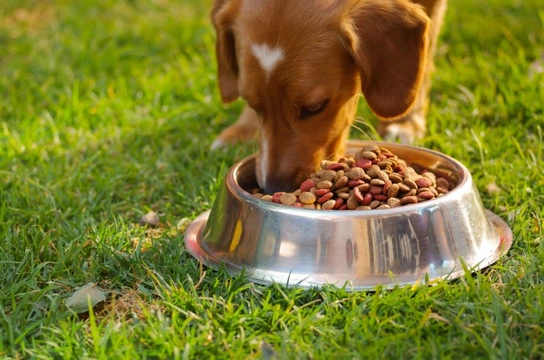
Five tips for dog owners that feed dry food or kibble to their dogs
Feeding dry food to your dog in the form of bags of kibble tends to be the most economical method of feeding dogs as a whole, as well as offering advantages such as a longer storage time once open than wet food, and avoiding contributing to dental decay.
However, it is important to pay some care and attention to how you choose, store and serve your dog’s kibble nonetheless, because kibble is not invincible nor immune to problems that can in their turn, become problems for you and your dog!
In this article, we will share five tips for dog owners that feed dry food or kibble to their dogs, or that feed a combination of wet and dry food together. Read on to learn more.
Storage
Dry food is a lot more forgiving of varied storage conditions than wet food is once it is open, because of course it does not need to be kept in the fridge. However, this in itself can lead to problems because we tend to take less care about dry food as a result!
Anything that you feed to your dog can and will have a direct effect on their health and wellness-and of course, you will want this to be good and not bad. Storing and handling your dog’s food incorrectly can affect its quality and potentially introduce parasites and other nasties, which can actually make your dog quite ill.
Buying very large bags of kibble can make feeding your dog much more economical, but around a month at the absolute top end is the longest period of time that you should feed from a dag of food that has been opened. This means that if it takes your dog longer than a month to get through a bag of food, its quality may have deteriorated towards the end, or have lost some of its nutritional content.
Always close the bag of food up as well as possible after you have taken out a portion, and/or decant it into an airtight container that will help to keep it fresher and protect it from vermin. Keep the food in a cool, dry place such as a cupboard, and avoid exposing it to overly high or low temperatures, moisture, or strong scents and flavours.
When you take out your dog’s food for their meal, use a scoop that you keep specifically for this purpose so that you do not introduce moisture, bacteria or debris from your hands into the bag, and wash and thoroughly dry the scoop regularly too.
Serving
Taking care over the storage and handling of your dog’s kibble goes a long way towards keeping it in good condition and packed full of nutrients, but you should also take care over serving it! Never let your dog get into the bag of food itself, and don’t put food that you have offered to your dog back if they do not eat it all.
Whilst kibble will not rot and spoil in the same manner that wet food will, which will smell, look and taste foul, kibble tends to go stale, and can easily grow fungus and bacteria that you may not be able to see, simply due to improper storage or handling of the bag. This will in turn have a negative effect on your dog’s health-so take care with kibble storage, and do not simply think of it as invincible!
Use glazed ceramic bowls for your dog where possible, and avoid plastic, because plastic can leech chemicals into the food over time. This is less of a risk with dry kibble than wet food, but it is still better to play it safe! Wash and dry your dog’s bowls after their meals too, just as you would if serving wet food.
If you like to mix dry kibble with wet food to feed to your dog, mix and serve immediately so that the kibble does not soften up-unless this is the effect you are trying to achieve!
Health
One of the benefits of feeding dry food to your dog is that it is less apt to stick and adhere to their teeth, which reduces the chances of your dog developing plaque and tartar, which can in their turn cause gum disease and rotting teeth. However, you should still brush your dog’s teeth regularly, and not simply rely on their food to avoid damage!
Dry food is of course by design dry, and so, contains a much lower moisture content than wet food. This can increase the risk of problems such as urinary tract infections and kidney and bladder stones in dogs that are prone to them, particularly male dogs. If your dog has had any type of problem of this sort, dry kibble may not be the ideal choice for them-but this is not always the case, so speak to your vet for advice before making any changes.
Making sure your dog gets enough water
As mentioned, dry food contains a much lower level of moisture than wet food, which means that your dog will need to drink more in order to counteract this. As long as your dog always has access to clean, fresh water with their food, you should not have to do anything else, as your dog will drink when they need to.
However, if you want to get more fluids into your dog, try soaking their kibble in water or a thin, salt-free broth or gravy rather than serving it dry.
Measuring the results
Whatever you feed to your dog, it should have a positive impact on them that you should be able to see. If your dog has a dull coat, dry skin, low energy or is otherwise not in optimum condition, it may be time to think about changing their diet. Once again, talk to your vet if you need advice.



